A Walk amongst Whiteknights Wildflowers
Pictured below are a few of the many wildflowers seen during the walk on the Whiteknights campus on 20th May 2007. The walk was led by Renee Grayer who gave us the benefit of her knowledge of Whiteknights and its flowers.
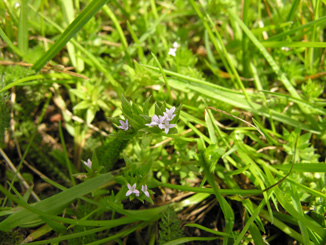 |
Field Madder is a low, bristly plant that often goes unnoticed among taller vegetation. The pointed oval leaves have prickly margins and are borne in distinct whorls around square stems.
The stems have downward pointing bristles and the pink flowers are borne in small clusters at the tip, with a ruff of green bracts below each cluster. |
Wall speedwell is a branched, downy annual plant.
The small but brilliant blue flowers have short stalks and are found in the upper leaf axils. It has triangular, coarsely-toothed leaves which lie in opposite pairs. The leaves become smaller the higher up the stem they are found.
The plant is often found growing in the tops of walls but also occurs in pavements, arable land and waste places. |
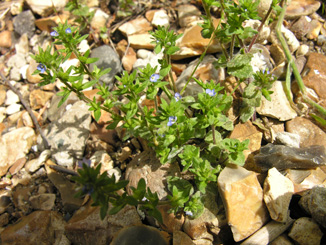 |
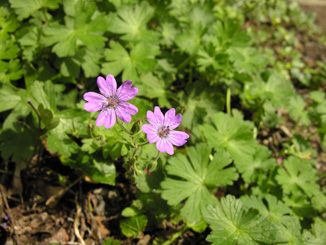 |
Hedgerow Cranesbill has long stems topped with medium sized flowers, unlike most other pale pin cranesbills which have smaller flowers.
The pale to mid pink petals overlap, giving a starry effect.
As with other cranesbills, the fruit is beaked and is usually in pairs. |
Hemlock Waterdropwort is a member of the carrot family and is one of the most poisonous plants in Europe. It is responsible for the deaths of many cattle.
It has large white flowerheads and triangular leaves, divided into leaflets of the same shape.
Its damp habitat is a key to its identification.
|
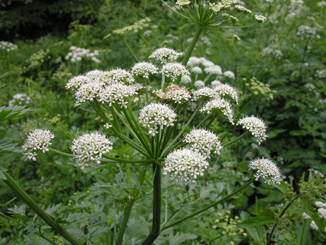 |
 |
Greater Stitchwort is a familar plant that brightens its woodland habitat in spring.
Its pure white flowers in loose clusters have five deeply notched petals and yellow stamens, with the sepals much shorter than the petals.
The rough, oppositely paired leaves persist for many weeks after flowering. |
Sweet Flag has leaves thay are identifiable by their wavy and ridged leaves, usually only on one side of the midrib.
Bright green in colour, the leaves are sword-shaped and sharply tapering.
The flower spike is borne halfway up the plant and can be difficult to see amongst the leaves. It is cylindrical, tapering at the top, and consists of a tightly packed cone of tiny yellow flowers which are divided into six segments with six stamens. |
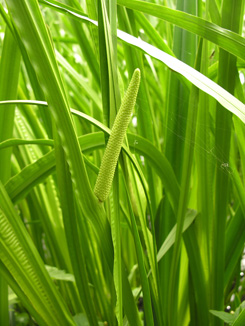 |
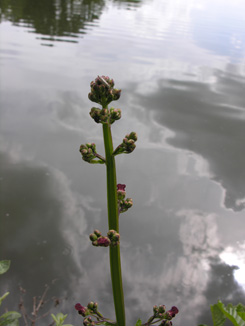 |
Water Figwort is a marginal plant with pointed, oval- toothed and evergreen leaves.
The reddish-brown stems are sometimes downy in appearance and are square in cross-section. The whorls of small, two-lipped flowers are greenish with purple-brown upper lips. These are held in branched spikes.
This is a plant of river banks, ditches and marshland and useful in a largish pond.
|
Cuckooflower is widespread in damp meadows and pastures and is a member of the cabbage family.
Each flower has four broad, oval petals ranging from white to lilac or deep pink.
The basal leaves have rounded lobes similar to those of watercress, and the stem leaves are divided into narrow, well separated lobes that resemble a ladder. |
 |
Click on the images above to see a larger version.
|